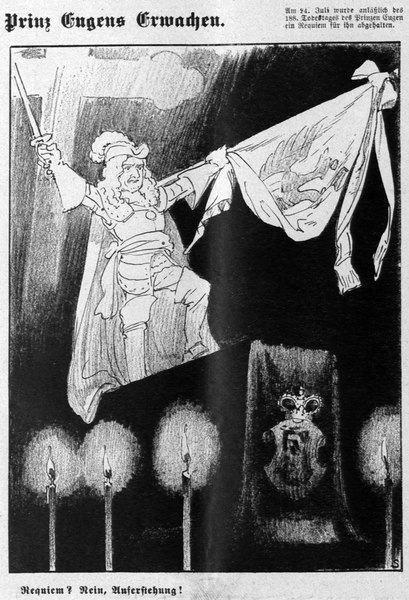Eugene’s last days and the lion of the Belvedere... the King of France, whom he had so often defeated, gave him an African lion... at last there were three days when the lion saw his master no more, refused all food and paced up and down restlessly inside his cage... at around three o’clock in the morning, he let out such a roar that his keeper ran out into the menagerie to see what had happened. There he saw lights in all of the chambers of the palace and heard the death knell in the chapel. Thus he knew that his Master, the great Prince Eugene, had died at this hour. (Hofmannsthal, Prinz Eugen der edle Ritter [Prince Eugene the Noble Knight])
Historical personages have served since time immemorial as figures onto which (usually) idealized portrayals of nations and peoples can be projected. During wartime, it is, naturally, victorious historical military leaders who are the figures of choice to be instrumentalized for propaganda purposes. In Austria, this was Prince Eugene of Savoy, who was celebrated in essays, poems and in children’s literature during the First World War.

